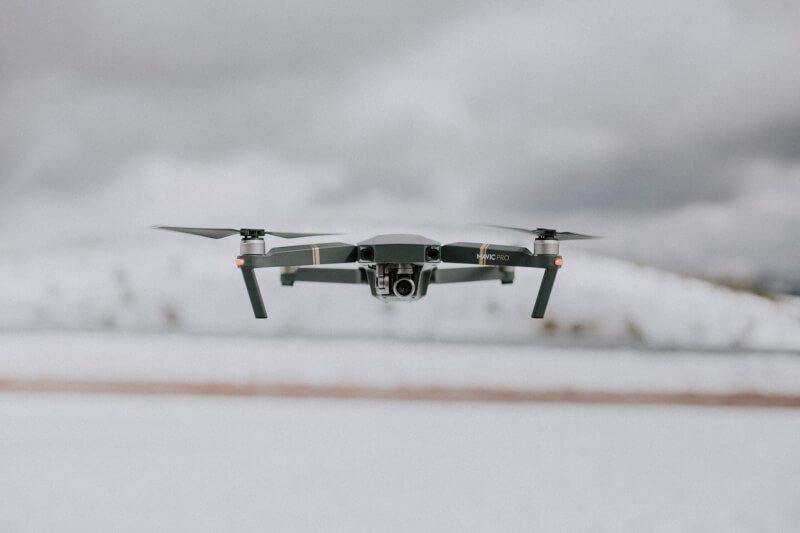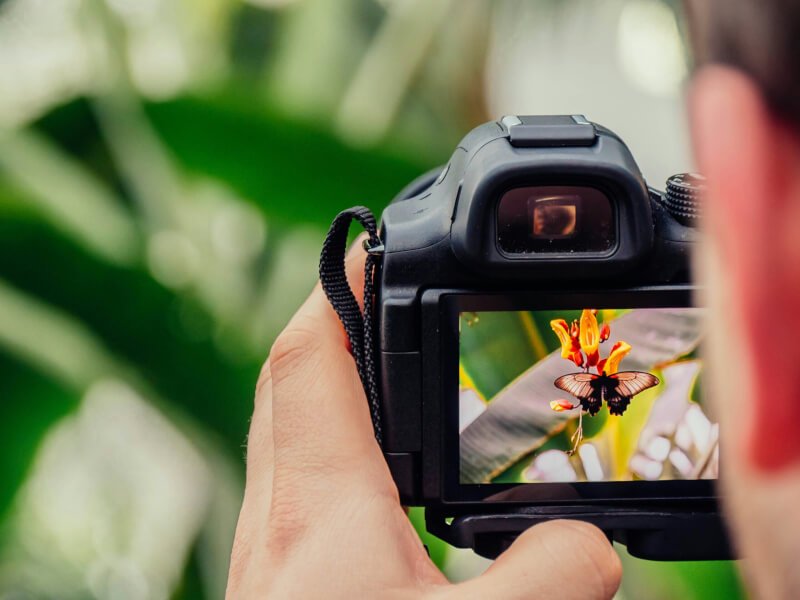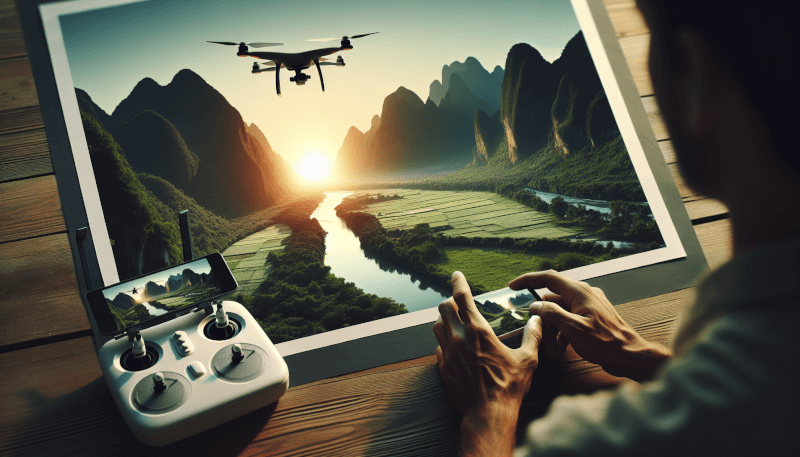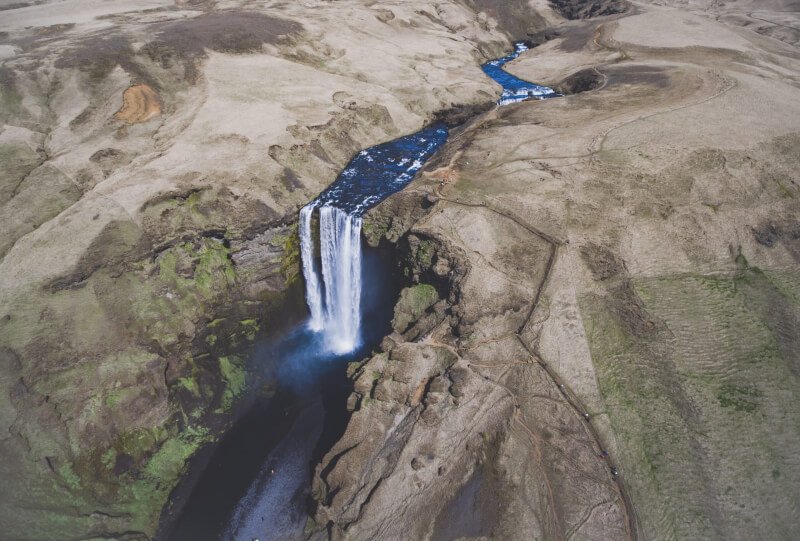Imagine being able to capture breathtaking views from above with your very own drone. With the rise in popularity of drones, it has become easier than ever to take stunning aerial photos. In this article, you will discover some valuable tips and tricks that will help you master the art of aerial photography and take your drone photography to new heights. From choosing the right location and composition to understanding camera settings, this guide will equip you with the knowledge you need to capture awe-inspiring images from the sky. So get ready to elevate your photography skills and unleash your creativity as you embark on this thrilling aerial adventure with your drone.

Choosing the Right Drone
When it comes to capturing stunning aerial photos, choosing the right drone is crucial. One of the first factors to consider is the camera specifications. Look for a drone that has a high-resolution camera and the ability to capture photos in RAW format. This will give you more flexibility in post-processing and ensure that your images are of the highest quality.
In addition to camera specifications, it’s important to look for advanced features in a drone. Features such as obstacle avoidance, follow me mode, and autonomous flight modes can greatly enhance your photography experience. These features will not only make it easier to capture unique shots, but they will also ensure the safety of your drone.
Lastly, check for image stabilization capabilities in a drone. A drone with a gimbal or built-in image stabilization will help to eliminate any motion blur or shakiness in your photos. This is especially important when shooting in windy conditions or capturing fast-moving subjects.
Understanding Camera Settings
Once you have your drone with the perfect camera, it’s important to understand the different camera settings in order to capture stunning aerial photos. One of the most important concepts to master is the exposure triangle, which consists of aperture, shutter speed, and ISO.
Aperture controls the depth of field in your photos, so choosing the right aperture setting is crucial for capturing the desired amount of background blur. Shutter speed determines how long the camera’s shutter stays open, affecting the amount of light that enters the camera. Lastly, ISO controls the sensitivity of the camera’s sensor to light.

Planning Your Shoot
To ensure that you capture the best aerial photos possible, proper planning is key. Before heading out to shoot, take the time to research the location. Look up any limitations or restrictions on flying drones in the area, and make sure you have all the necessary permissions or permits.
Consider the timing and lighting of your shoot. The golden hour, which is the hour after sunrise or before sunset, is often the best time to capture stunning aerial photos due to the soft, warm light. However, depending on the subjects you intend to capture, different lighting conditions may be more suitable.
Identify interesting subjects in the area that you plan to photograph. This could be anything from iconic landmarks to natural landscapes. Having a clear idea of what you want to capture will help you make the most of your time in the air.
Getting the Composition Right
Composition plays a vital role in creating visually appealing aerial photos. By utilizing the rule of thirds, you can create a sense of balance and interest within your photos. Imagine breaking your image into three equal parts both horizontally and vertically, then place subjects of interest along these gridlines or at their intersections.
To add depth and leading lines to your photos, look for natural elements such as roads, rivers, or fences that can lead the viewer’s eye through the image. This will make your photos more dynamic and engaging.
Don’t be afraid to experiment with different angles and perspectives while photographing from the air. By trying out different heights and orientations, you can capture unique and eye-catching shots that stand out from the crowd.

Utilizing Filters
Filters can be a great tool to enhance your aerial photos. Polarizing filters, for example, can reduce glare and reflections, making your images appear clearer and more vibrant. These filters are particularly useful when photographing bodies of water or landscapes with a high amount of sunlight.
Neutral density filters, on the other hand, can help balance the exposure in your photos. These filters reduce the amount of light entering the camera, allowing you to use longer shutter speeds or larger apertures without overexposing the image. This can be especially useful when photographing in bright conditions.
If you’re looking to manage contrast in your aerial photos, graduated filters are a great option. These filters have a gradual transition from clear to dark, allowing you to darken only a portion of the image. This is particularly useful when photographing landscapes with a bright sky and darker foreground.
Ensuring a Stable Flight
To capture sharp and clear aerial photos, it’s important to ensure a stable flight. Mastering the basic flight controls of your drone is the first step. Practice flying in open spaces and gradually increase your skill level before attempting more complex maneuvers.
Using the GPS stabilization mode can also greatly assist in achieving a stable flight. This mode allows your drone to maintain its position and altitude automatically, making it easier to focus on capturing your photos without worrying about the drone drifting.
Lastly, avoid flying in windy conditions whenever possible. Strong winds can affect the stability of your drone and make it more difficult to capture sharp images. Check the weather forecast before heading out to shoot and reschedule if wind speeds are too high.

Capturing Different Perspectives
To make your aerial photos truly stand out, try capturing different perspectives. One way to do this is by attempting bird’s-eye view shots. By flying your drone high above the subject, you can capture a unique and expansive view that is not possible from the ground.
On the other hand, low-level shots can also create a captivating perspective. By flying close to the ground, you can capture intricate details and create a sense of intimacy in your photos. This is particularly effective when photographing natural elements such as flowers or wildlife.
Don’t be afraid to think outside the box and shoot from unusual angles. By experimenting with different perspectives, you can capture photos that are not only visually interesting but also tell a compelling story.
Post-Processing Techniques
Post-processing is an essential step in creating stunning aerial photos. Enhancing contrast and saturation can help make your images pop. Adjusting these settings selectively can help bring out important details while maintaining a natural look.
Cropping and straightening images can also greatly improve composition. This allows you to remove any distractions and create a more focused and visually appealing image. Be mindful not to crop out important elements or subjects that contribute to the overall story of the photo.
If unwanted objects or distractions are present in your aerial photos, don’t worry. With the help of photo editing software, you can easily remove these objects and create a clean and polished final image. Be careful to maintain the integrity of the original photo while removing any unwanted elements.

Respecting Privacy and Regulations
As a responsible drone pilot, it’s important to respect both privacy and regulations. Learn and follow local drone laws in your area to ensure that you are flying within the legal boundaries. Familiarize yourself with any restrictions or limitations on flying drones in certain locations or during specific times.
If required, obtain the necessary permits and permissions before flying your drone. Some areas may require you to obtain authorization from relevant authorities, especially when flying near airports, public spaces, or over private property. It’s better to be prepared and avoid any legal issues.
Lastly, respect people’s privacy while flying your drone. Avoid flying over private property without permission and always prioritize the safety and comfort of individuals on the ground. Taking these precautions will help maintain a positive image for drone photography and ensure the safety and privacy of others.
Ensuring Safety
Safety should always be a top priority when flying a drone. To ensure a safe flight and minimize the risk of accidents, maintain a safe distance from obstacles. Be mindful of trees, buildings, and power lines that may pose a threat to your drone. Familiarize yourself with the flight restrictions and guidelines provided by the manufacturer of your drone.
Monitor your drone’s battery life closely during flights. Plan your shoots accordingly and be aware of the estimated flight time of your drone. Always bring extra batteries with you to avoid unexpected crashes due to low battery power.
Perform regular maintenance checks on your drone to keep it in optimal condition. Inspect the propellers, motors, and other components before each flight. Clean the camera lens to ensure clear and sharp photos. Regular maintenance will not only help prevent accidents but also prolong the lifespan of your drone.
By following these tips and practicing responsible drone photography, you can take stunning aerial photos that will captivate viewers and showcase the world from a unique perspective. Remember to always prioritize safety, respect regulations, and continue honing your skills for endless possibilities in aerial photography. Happy flying!


